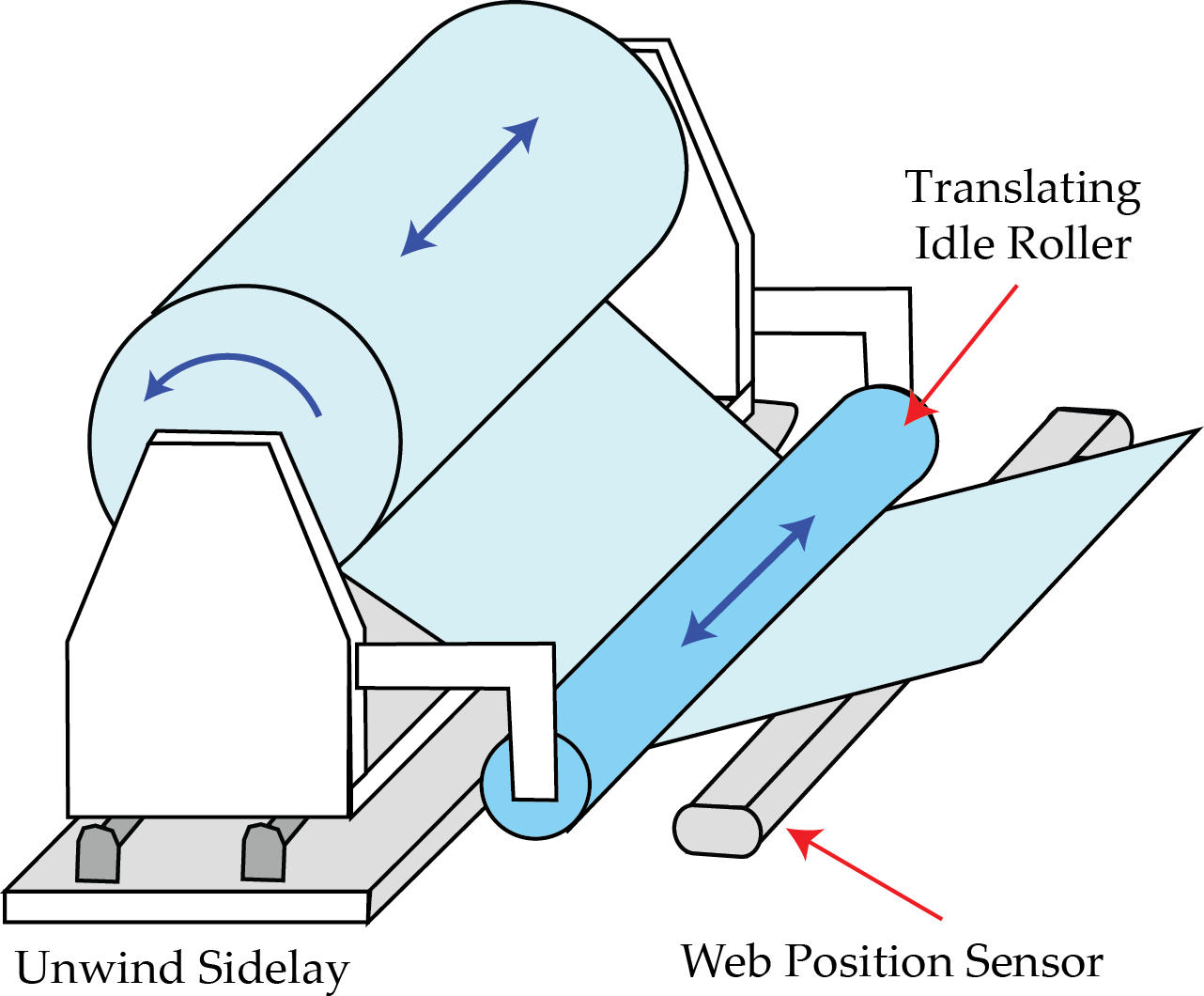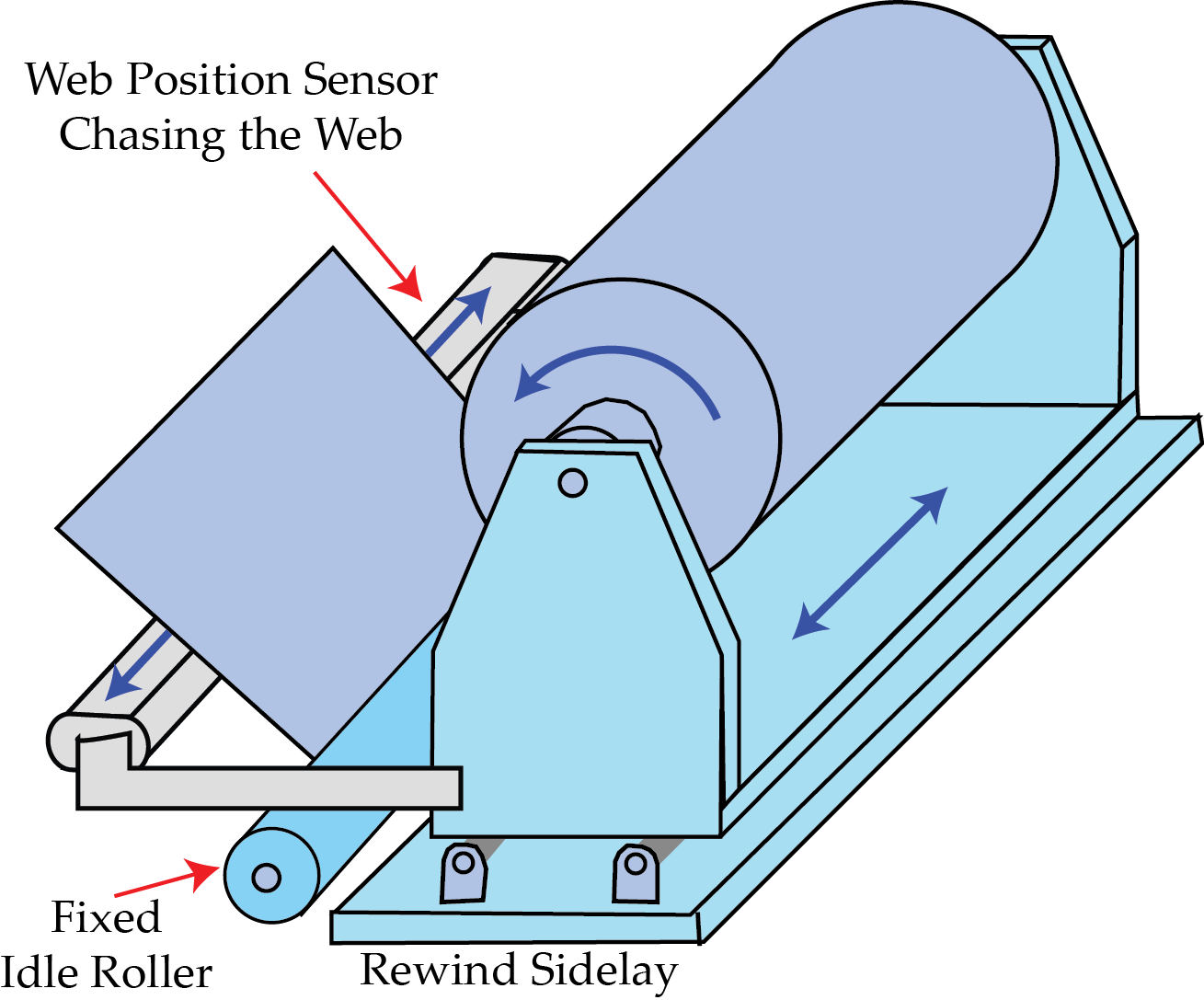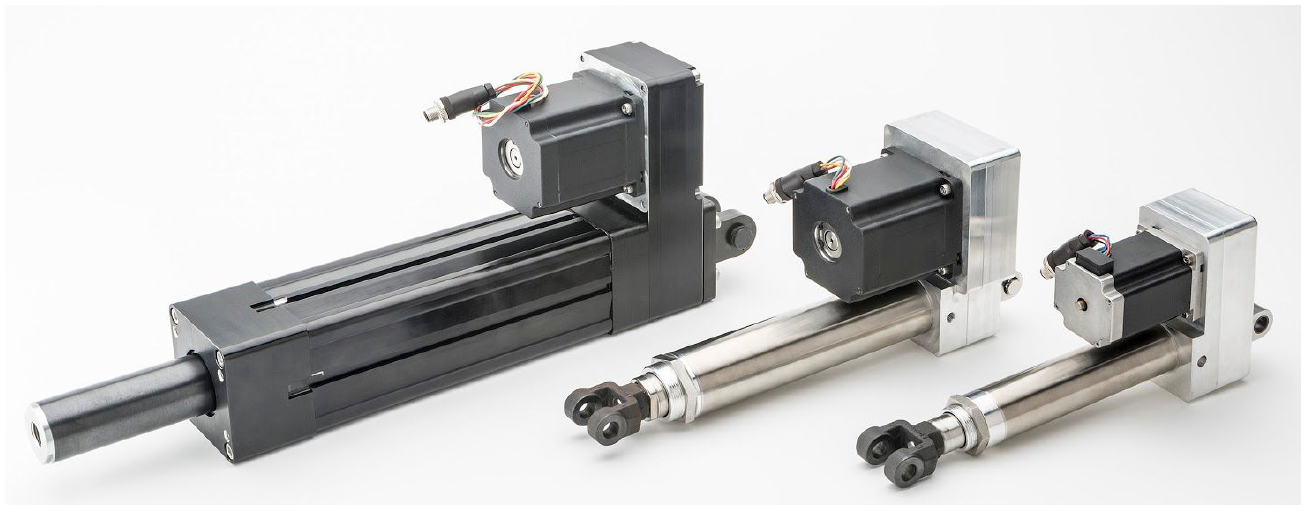Unwind and rewind web guide systems are used at the start and end of the converting lines. That is why they are referred to as terminal web guides. So, what is required to properly incorporate a terminal web guide in your converting line based on web guiding fundamentals?
In previous posts we discussed both unwind and rewind guides. As indicated, they differ in their relationship with the web. Unwind guides require a sensor with its position fixed to the frame of the machine. This allows the sensor to determine the correct location of the web. A controller and actuator help reposition the shifting stand based on the location of the web detected by the sensor as the web is unwound from the roll.

Rewind guides use a sensor mounted to the shifting stand. In a sense, the sensor locates the position of the web and through the controller and actuator, repositions the shifting stand to the location of the web. The stand is chasing the web.

Now that we have the basic knowledge as to how these two types of terminal web guides work, we should understand some requirements to have an adequate unwind or rewind web guide system.
Design considerations
Mechanical structure rigidity and stiffness
Unwind and rewind stands are moving considerable amounts of weight. The stand not only supports the weight of the roll but also the stand itself. Smaller stands may work with a couple of hundred pounds. However, larger stands are known to handle thousand of pounds. We need to make sure that the mechanical structure of the unwind or rewind has the required rigidity and stiffness, specially when handling a large mass. In general, the rigidity should be such that avoids mechanical resonance of the structure. The natural frequency of the structure should be at least 3 to 4 times the operating frequency of the control system.
Actuator sizing

Actuator sizing is one of the most misunderstood parameters in designing terminal web guides. Typically, the total load is the only parameter considered and in many cases the thrust required is overestimated. So, aside from the total load, we also need to consider the static friction to determine the breakaway force required, the desired acceleration, the important factors to consider when sizing an actuator are the required thrust to push the load, and the acceleration needed to reject disturbances and errors.
Actuator coupling and stiffness
Just like the mechanical structure rigidity and stiffness we need to make sure the actuator coupling and stiffness are accounted for in the design. Any play or slack in the actuator coupling will reduce the stiffness of the overall system and will destabilize the system.
Installations considerations of Terminal Web Guides
In term of installation considerations the most important issue is the location of the sensor with respect to the shifting stand. For unwinds, the sensor will be fixed to the machine frame and is independent of the shifting stand. For rewind web guide systems the sensor is installed on the shifting stand and moves with the shifting stand.
Advantages of Terminal Web Guides
These web guides are simple, and they do not have to take advantage of the normal entry rule. The system deals with parallel rollers and the movement of the web is done by the lateral displacement of the shifting stand. This eliminates the stresses on the web as there is no bending of the web due to changes in the parallelism of rollers as you find on intermediate web guiding systems.
Disadvantages of Terminal Web Guides
In general, terminal web guides require higher thrust actuators due to the amount of weight that has to be moved. The actuator has to move both the roll of material and the shifting stand. Additional, this type of system is not a good choice if there are high frequency disturbances. In this case, an intermediate web guiding system might be a good option if there is space to install such a system in the line between the unwind and the next critical process or the line and the rewind after the last critical process.
If these considerations are taking into account in the design of the terminal web guiding system, you will have a successful terminal web guiding system in your converting line. In any case, our team of experts are available to help you out in your web guiding system design.
If you are interested in learning more on web guiding and other applications in web handling like our social media page and sign up for our monthly emails.
In our next weekly blog we will address intermediate web guides, starting with displacement web guides.
